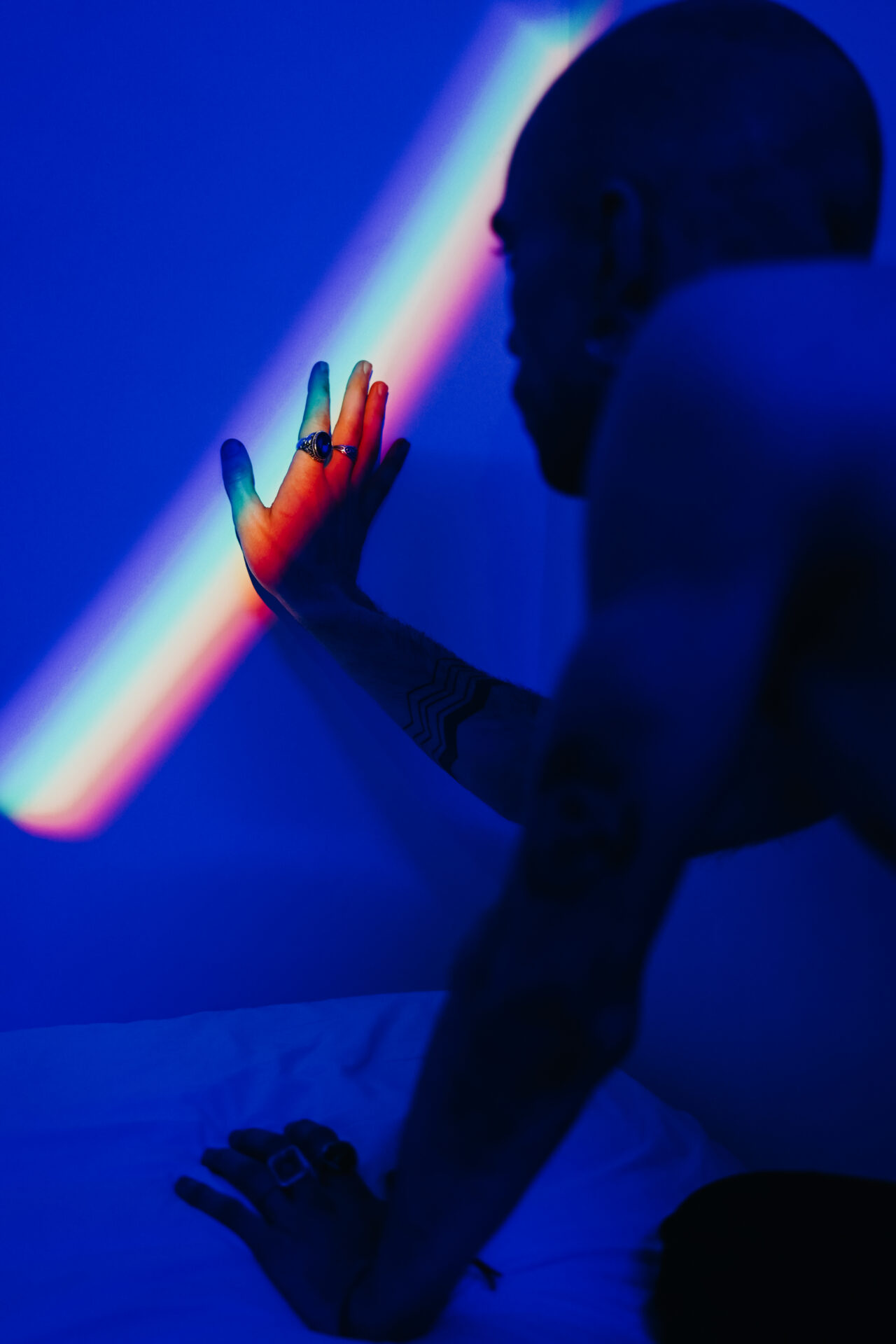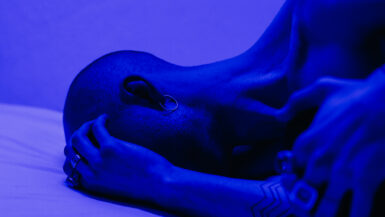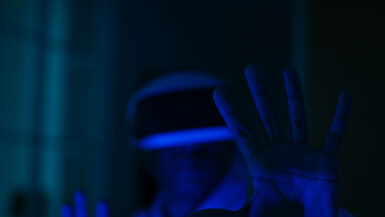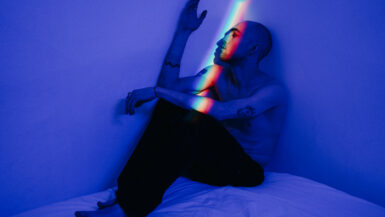In today’s fast-paced, technology-driven world, the effects of blue light exposure on sleep and productivity have become a crucial topic of discussion. As we delve into the intricate relationship between these factors, it is essential to consider the role of cultural differences in shaping our understanding and experiences. In this article, “Blue Light and Sleep: Exploring Cultural Differences,” we will examine how various cultural norms and practices influence the impact of blue light on sleep patterns and, consequently, on individual productivity levels. By considering both the potential benefits and detriments of blue light exposure in different contexts, we aim to provide a comprehensive and nuanced understanding of this complex issue. Join us as we embark on this enlightening journey, exploring the interplay between technology, sleep, and culture in our modern world.
Global Work Environments and Blue Light Impact on Productivity
In the increasingly interconnected world of work, understanding the nuances of how blue light affects productivity across different cultural contexts is crucial. This section will delve into the various factors that contribute to these differences, including the impact of technology, cultural attitudes towards work and sleep, and potential implications for global businesses. By gaining a deeper understanding of these aspects, we can better navigate the challenges and opportunities that blue light presents in our global work environments.
Technology Adoption and its Impact on Blue Light Exposure
The widespread adoption of technology in various forms has led to increased exposure to blue light for individuals across different cultures. From computer screens to smartphones, the sources of blue light are ever-present in our daily lives. As a result, blue light exposure has become an essential factor to consider when examining the impact on productivity in global work environments. Some cultures may place a higher emphasis on technological use during work hours, while others might prioritize it in leisure time. This variation in exposure patterns could lead to differing effects on sleep and productivity across cultures.
Cultural Attitudes Towards Work-Life Balance and Sleep
Cultural attitudes towards work-life balance and sleep play a significant role in determining blue light’s impact on productivity. For instance, in countries where long work hours and minimal breaks are the norm, the effect of blue light exposure on sleep and productivity may be more pronounced. Conversely, cultures that emphasize the importance of rest and relaxation may be better equipped to mitigate the negative effects of blue light on sleep quality. Understanding these cultural differences can help businesses create more effective strategies to address the issue of blue light exposure in the workplace.
Work Schedules and Their Influence on Blue Light Exposure
Work schedules can also have a considerable impact on the relationship between blue light exposure and productivity. For example, those working late-night shifts or in industries that require constant screen time may be more susceptible to the adverse effects of blue light on sleep quality. The resulting sleep disturbances can have a significant impact on productivity levels, which can vary depending on cultural norms and expectations surrounding work hours. To explore more about the connection between blue light and sleep, you can check out our article on The Connection Between Blue Light and Sleep in Animals.
Implications for Global Businesses and Strategies for Adapting
As the world becomes more interconnected, global businesses must be aware of the cultural differences in blue light exposure and its effects on sleep and productivity. By understanding these nuances, companies can develop tailored strategies to address blue light exposure, such as implementing screen time policies, providing blue light filtering options, or encouraging regular breaks from screens. These efforts can help create a healthier work environment, promoting better sleep and increased productivity for employees across all cultural backgrounds.
In summary, the impact of blue light on sleep and productivity is a multifaceted issue influenced by various factors, including technology adoption, cultural attitudes, work schedules, and global business practices. By acknowledging and addressing these cultural differences, we can create a more balanced and productive work environment for all in our increasingly interconnected world.
Cultural Adaptations to Minimize Blue Light Effects
As we explore the cultural differences surrounding blue light exposure and its impact on sleep, it is essential to recognize the various ways in which people around the world have adapted to minimize these effects. By learning from these cultural adaptations, we can better understand the strategies and practices that can help us protect our sleep and overall well-being in the face of increasing blue light exposure. In this section, we will discuss several noteworthy cultural adaptations that have emerged in response to the blue light phenomenon.
Embracing Siestas and Napping Cultures
One effective strategy to counteract the potential negative effects of blue light exposure is to embrace napping cultures, such as the siesta in Spain and Latin America. Naps can help alleviate the impact of sleep disruptions caused by blue light, providing an opportunity for the body and mind to recharge during the day. By adopting a napping culture, individuals can maintain productivity despite potential sleep disturbances resulting from excessive blue light exposure.
Traditional Techniques for Relaxation and Sleep Preparation
Various cultures around the world have long-standing traditions and techniques for relaxation and sleep preparation, which can help mitigate the effects of blue light. For example, practices such as meditation, yoga, and mindfulness can help calm the mind and ease the transition into sleep. Additionally, many cultures emphasize the importance of creating a sleep-conducive environment by minimizing artificial light and noise in the bedroom. These practices can be beneficial for individuals looking to protect their sleep quality in the face of blue light exposure.
Adopting Blue Light Filtering Technologies
As awareness of the potential negative effects of blue light exposure grows, people across different cultures have begun adopting blue light filtering technologies. These tools, such as screen protectors, specialized glasses, and software applications, can help reduce the amount of blue light emitted by electronic devices. By incorporating these technologies into daily routines, individuals can minimize the impact of blue light on their sleep and overall well-being.
Community-Wide Initiatives to Promote Healthy Sleep
In some cultures, community-wide efforts have been launched to promote healthy sleep habits and minimize the effects of blue light exposure. These initiatives may include public education campaigns, sleep hygiene workshops, or even city-wide policies to reduce artificial light pollution. By fostering a collective awareness and commitment to healthy sleep practices, these communities can better address the challenges posed by blue light exposure.
As we have seen, various cultural adaptations have emerged in response to the increasing prevalence of blue light exposure and its potential impact on sleep. By embracing napping cultures, utilizing traditional relaxation techniques, adopting blue light filtering technologies, and engaging in community-wide efforts to promote healthy sleep, people around the world are finding innovative ways to protect their sleep and maintain productivity. These cultural adaptations offer valuable insights and strategies that we can all learn from and apply in our own lives as we navigate the challenges posed by blue light exposure.
Sleep Patterns and Bedtime Routines in Different Societies
Diving deeper into the cultural differences surrounding sleep, it becomes evident that sleep patterns and bedtime routines vary significantly across the globe. These variations can have a profound impact on how individuals are affected by blue light exposure and its consequences on sleep quality and productivity. In this subsection, we will explore the unique sleep patterns and bedtime routines found in different societies, shedding light on how these practices influence the relationship between blue light and sleep.
The Siesta Culture of Spain and Latin America
Siesta culture, prevalent in Spain and Latin American countries, is an example of a unique sleep pattern that can help mitigate the effects of blue light exposure. The siesta typically involves a midday break, during which individuals take a short nap to recharge and rejuvenate. This practice allows for better mental and physical well-being and can counteract the potential sleep disruptions caused by excessive exposure to blue light.
Segmented Sleep Patterns in Pre-Industrial Europe
Before the widespread use of artificial lighting, people in pre-industrial Europe followed a segmented sleep pattern. This involved two distinct sleep periods during the night, separated by a period of wakefulness. During this time, individuals would engage in various activities, such as reading, praying, or socializing. While this sleep pattern has largely disappeared with the advent of modern lighting, it serves as an interesting example of how cultural practices can influence sleep and potentially affect blue light exposure.
Flexible Sleep Schedules in Indigenous Communities
Indigenous communities around the world, such as the Tsimane people of Bolivia, often follow more flexible sleep schedules, dictated by natural light and community needs. Rather than adhering to a strict bedtime routine, individuals in these communities sleep when they feel tired and wake up with the rising sun. This approach to sleep may help minimize the effects of blue light exposure, as individuals can adapt their sleep patterns to prioritize rest and recovery.
Bedtime Rituals in East Asian Cultures
In East Asian cultures, bedtime rituals often emphasize relaxation and preparation for sleep. Practices such as drinking warm herbal tea, engaging in light stretching or meditation, and maintaining a clutter-free bedroom environment can all contribute to a more restful night’s sleep. By prioritizing sleep hygiene and creating a calming bedtime routine, individuals in these cultures may be better equipped to cope with the potential negative effects of blue light exposure on sleep quality.
As we have explored in this subsection, sleep patterns and bedtime routines vary vastly across different societies, each with their unique practices and cultural norms. These variations can have a considerable impact on the relationship between blue light and sleep, influencing how individuals experience and manage the effects of blue light exposure. By examining these diverse sleep practices, we gain valuable insights that can help us better understand the complex interplay between blue light, sleep, and culture.
Understanding Blue Light Exposure Across Cultures
As we continue our exploration of the relationship between blue light and sleep, it is essential to recognize the diverse ways in which different cultures experience and respond to blue light exposure. By examining these cultural variations, we can gain a broader understanding of the complex interplay between technology, sleep, and cultural practices. In this subsection, “Understanding Blue Light Exposure Across Cultures,” we will delve into some noteworthy aspects of blue light exposure in various cultural contexts and their implications for sleep and well-being.
The Pervasiveness of Screen Time in Western Cultures
In many Western cultures, screen time has become an integral part of daily life, with individuals spending a significant portion of their waking hours in front of screens for work, communication, and entertainment purposes. This high level of blue light exposure can have a substantial impact on sleep quality and duration, potentially leading to sleep disturbances and decreased productivity. By recognizing this cultural tendency, we can better understand the challenges posed by blue light exposure and the importance of developing strategies to mitigate its effects on sleep and well-being.
Evening Rituals in Middle Eastern Societies
In contrast to Western cultures, many Middle Eastern societies place a strong emphasis on evening rituals and socialization, often extending late into the night. This cultural practice can result in increased exposure to artificial light sources, including blue light-emitting devices, during the hours leading up to bedtime. As a result, individuals in these cultures may be more susceptible to the negative effects of blue light on sleep, underscoring the need for tailored approaches to address this issue in various cultural contexts.
Impact of Urbanization and Light Pollution in Developing Countries
Rapid urbanization in many developing countries has led to increased light pollution, which can exacerbate the effects of blue light exposure on sleep. As access to electronic devices and artificial lighting becomes more widespread, individuals in these countries may face unique challenges related to blue light exposure and sleep quality. By examining the intersection of urbanization, technology adoption, and cultural practices, we can develop a more holistic understanding of the factors influencing blue light exposure and its impact on sleep across different cultures.
Traditional Practices and Blue Light Exposure in Indigenous Communities
Indigenous communities, often characterized by their strong connection to nature and traditional practices, can offer valuable insights into the relationship between blue light exposure and sleep. Given their limited exposure to artificial light and electronic devices, these communities may experience fewer sleep disruptions related to blue light. Studying the sleep patterns and bedtime routines of indigenous populations can provide essential lessons on how to maintain a healthy balance between technology use and sleep in our modern world.
As we have seen in this subsection, the experience of blue light exposure varies considerably across different cultures, influenced by factors such as screen time habits, evening rituals, urbanization, and traditional practices. By understanding these cultural differences, we can gain valuable insights into the complex relationship between blue light and sleep, helping us develop more effective strategies to protect our sleep and overall well-being in our technology-driven world.
Electronic Device Usage and Sleep Disruptions Worldwide
As we delve deeper into the topic of blue light and sleep, it is essential to analyze the role of electronic devices in contributing to sleep disruptions across the globe. Electronic devices have become an indispensable part of our daily lives, providing us with endless information, entertainment, and communication capabilities. However, their widespread usage also comes with potential consequences, particularly when it comes to our sleep quality. In this subsection, “Electronic Device Usage and Sleep Disruptions Worldwide,” we will explore the various ways in which electronic devices impact sleep across different cultures and the measures taken to mitigate these effects.
The Prevalence of Smartphone Use Before Bedtime
Smartphones have become a constant companion for many individuals worldwide, often being the last thing we interact with before falling asleep. This late-night usage can lead to extended exposure to blue light, which has been shown to disrupt our natural sleep-wake cycle, ultimately affecting sleep quality. The prevalence of smartphone use before bedtime varies across cultures, with some societies placing a greater emphasis on disconnecting from screens at night. Understanding these cultural differences in smartphone usage patterns can help inform strategies to reduce the negative impact of blue light on sleep.
Screens in the Bedroom: A Global Perspective
The presence of electronic devices, such as televisions and computers, in the bedroom is another factor that can contribute to sleep disruptions worldwide. Having screens in the bedroom can make it challenging to create a sleep-conducive environment, as the temptation to engage with these devices can lead to prolonged exposure to blue light. Cultural norms surrounding the use of screens in the bedroom differ significantly, with some societies prioritizing the importance of a screen-free sleep environment, while others may not place as much emphasis on this aspect of sleep hygiene.
Electronic Devices and Sleep in Children and Adolescents
Children and adolescents are particularly vulnerable to the negative effects of blue light exposure, as their developing brains and bodies require sufficient sleep for proper growth and functioning. Electronic devices, such as smartphones, tablets, and gaming consoles, can contribute to sleep disruptions in this age group, with potential consequences for their overall well-being and academic performance. Cultural norms and parenting practices surrounding electronic device usage in children and adolescents can play a crucial role in determining the extent of blue light exposure and its impact on sleep.
Workplace Technology and the 24/7 Global Economy
The increasing demands of the global economy have led to a rise in the use of technology in the workplace, often resulting in round-the-clock connectivity for employees. This constant engagement with electronic devices can contribute to sleep disruptions, particularly for those working in industries that necessitate regular screen time or irregular work hours. Cultural attitudes towards work-life balance and the role of technology in the workplace can influence the extent of blue light exposure experienced by individuals across the globe, highlighting the need for tailored approaches to address sleep disruptions in various cultural contexts.
Measures to Counteract Electronic Device-Related Sleep Disruptions
As the impact of electronic devices on sleep becomes increasingly evident, individuals and societies worldwide have begun implementing various measures to counteract these effects. Some of these strategies include adopting blue light filtering technologies, setting screen time limits, and establishing device-free zones in the home. By examining the diverse approaches taken by different cultures to address electronic device-related sleep disruptions, we can gain valuable insights into the most effective methods for promoting healthy sleep in the face of our ever-growing reliance on technology.
In summary, electronic device usage and its subsequent impact on sleep disruptions is a complex issue shaped by various factors, such as cultural norms, parenting practices, and workplace expectations. By examining the diverse ways in which electronic devices influence sleep across different cultures, we can better understand the challenges and potential solutions to protect our sleep and overall well-being in today’s technology-driven world.





Leave a reply